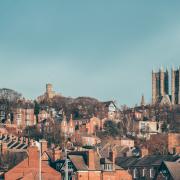Hutton-le-Hole is not one village but two as Terry Fletcher discovers during a visit to a museum of rare quality and vision Photographs by Mike Kipling
How to get there: Off the A170 Sutton Bank to Scarborough road near Kirkbymoorside.
Parking: Large public car park at the top of the village.
What to do: Fine moorland walking, picnicking on the village green. Excellent exhibitions and wealth of special events at Ryedale Folk Museum. www.ryedalefolkmuseum.co.uk.
If Hutton-le-Hole did not already exist chocolate box manufacturers may just have had to invent it to decorate their output. When approached through the steep-sided cleft which the Hutton Beck has carved through the surrounding Tabular Hills the village has an impossibly pretty, almost Brigadoon-like, quality about it.
As soon as they come into view the houses, clustered around the broad village green in their sheltered hollow beneath the moors, instantly proclaim their upland heritage by being built of solid stone rather than the mellow brickwork of lower-lying communities. But, with their backs to the moors and the north wind they still huddle beneath red pantiled roofs, the architectural signature of the North York Moors National Park. The green itself is an undulating humpy, bumpy affair that will never stage a serious village cricket match and so on sunny afternoons it is the preserve of small groups of picnickers watching their children paddling and splashing in the crystal-clear beck that divides it in two.
It would be nightmare to mow but fortunately the grass is kept immaculately cropped by the sheep which meander down from the surrounding hills and roam freely around the village. Be warned, they wander wherever they choose and clearly believe they have the unchallenged right of way in any confrontation. Careless picnickers will also find them partial to enlivening their otherwise monotonous diet by helping themselves to the odd unguarded sandwich or two.
The village is also the start and finish for a number of invigorating moorland walks, either by making use of the special Moorsbus service or, more often, starting in the large car park tucked away at the top of the village and ending in the local pub. Hutton is also on the line of the Tabular Hills Walk, a 50 mile link from Scarborough to Helmsley that turns the horseshoe-shaped 110-mile-long Cleveland Way national trail into a circular tour of the moors and coast.
But Hutton’s major attraction is that this is not one village but two. Tucked away behind a deceptively unassuming fa�ade is the Ryedale Folk Museum.
The understated title might suggest a collection of a few vintage agricultural tools or perhaps a few photographs of horse-drawn carts at work on local farms. Instead it houses one of North Yorkshire’s hidden gems and a museum of rare quality and vision.
Since the mid 1960s the museum has brought together not mere artefacts but entire buildings which have been rescued from dereliction, decay and destruction and given a new home. Cottages, shops and workshops from across Ryedale, and sometimes beyond, have been dismantled, transported across country and accurately reassembled on a three acre plot. Others, including an Iron Age round house built of wood, straw, mud and horsehair, have been authentically recreated to illustrate more than two centuries of human occupation.
The ‘village’ now boasts the Elizabethan manor house that once stood in Harome, two original cruck-houses, thatched cottages, shops and a stern Victorian schoolroom as well as what is thought to have been the first daylight photographic studio. It even has its own fire engine dating from the 1850s and, for when the inevitable happens, the horse-drawn hearse from neighbouring Farndale.
Not surprisingly, given its popularity with visitors, Hutton-le-Hole is well supplied with caf�s and teashops and, fittingly in such a chocolate box location, there’s even its own chocolate factory.


























